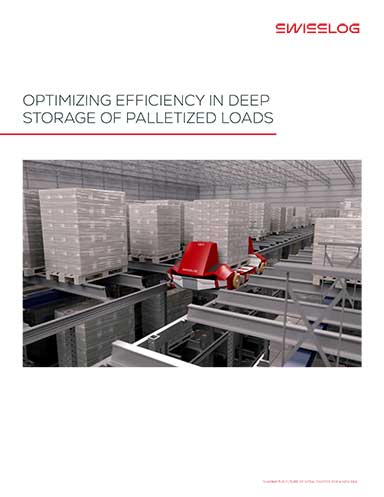Add a Labor Management System to Reduce Your DC Costs, Improve Performance

You can add a labor management system to contribute to your company's bottom line while also improving productivity in your distribution center.
Consider this: Companies using a labor management system (LMS) report gains in overall distribution center (DC) productivity of 10 to 25 percent
When integrated into a warehouse management system (WMS), LMS has the following potential:
Lower labor costs.
Predict when and where more workers are likely needed.
Provide companies with deep and real-time visibility into their operations.
- Significantly improve the performance of individual employees and overall productivity.
What company wouldn’t want that?
Yet only an estimated 20 percent of distribution centers currently use a labor management system.
Why?
Upfront expense and time needed for implementation may be prohibitive, especially for small distribution centers. But for many companies, especially those operating high-volume distribution centers or dealing with products that turn over inventory quickly, adding a labor management system may be a key step toward improving on-time performance and meeting business goals.
How do you know when your business is ready for a labor management system? Here’s what to consider before purchasing, during implementation and how to get the most from your investment.
LMS - Exactly What Is It?
A labor management system provides detailed labor tracking, productivity reporting and planning capabilities. Count on LMS to deliver these capabilities:
Monitor and measure the performance of individual users, tasks, groups and facilities.
Capture data about the time needed for physical tasks with radio frequency scanning, interaction with material handling equipment or by voice commands.
Provide the basis for construction of the engineered process standards within the LMS.
Compare performance to engineered standards or goals.
Analyze the amount of work performed in a given period.
When integrated with a WMS, accurately forecast the number of workers needed, and when and where they are needed.
- Train your employees by communicating how much time each task is expected to take and comparing their performance to the standards or goals.
Why and When You Should Consider
Labor is the largest expense in nearly every DC, so it only makes sense that this cost should be carefully managed. As competitive pressures continue to grow, companies look to save costs in every part of their operations. Often a corporate directive to reduce labor costs drives the selection of an LMS.
A labor management system can save money by accurately tracking the time required for tasks and using that information to forecast staffing levels needed on a monthly, weekly or daily basis and down to very granular levels for individual shifts or hours.
What’s more, a distribution center’s workforce may be underperforming, and an LMS can help identify inefficient activity or processes and bottlenecks. Many employees respond positively to learning how their performance compares to standards. Companies that choose to reward their employees count on LMS data about individual performance.
How to Choose a Labor Management System
The cost to purchase and deploy a labor management system versus the expected labor costs saved is the key calculation to make. Your company’s senior management is likely to expect a business case that’s based on an expected return on investment and clear payback period. Be sure to consider how productivity gains can extend the useful life of your DC and avoid the need for additional capital investment.
A detailed study of every job in every location within your distribution center is your first step. Afterward, you’ll need to follow these seven steps:
Assign two teams - one that carefully documents all possible functions to engineer labor standards, and the other that’s responsible for managing the installation and launch.
Review existing work processes to identify opportunities to streamline the work.
Quantify the time needed for each pick and every movement.
Consider using an off-the-shelf solution to decrease upfront costs, especially in lower-volume operations. Some LMS suppliers offer a built-in database of predetermined work standards.
Make sure that the LMS you consider integrates with existing systems for warehouse, execution and transportation management, along with enterprise resource planning.
Involve employees in the planning because they often have some of the best ideas for how a process can be improved.
- Note that gaining buy-in for establishing or changing engineered labor standards can be challenging in a unionized DC and often must be negotiated.
Get More Out of Your DC
You can add a labor management system to contribute to your company’s bottom line while also improving productivity in your distribution center. Since only a small number of companies use LMS, you can gain significant competitive advantage by integrating it into your operation.
Article Topics
Swisslog News & Resources
Walmart chooses Swisslog AS/RS and software for third milk processing facility Walmart and Swisslog Expand Partnership with New Texas Facility Swisslog gives live demonstration of ItemPiQ latest evolution Cardinal Health at-Home Solutions automates from shelf to patient Inside Cardinal Health at-Home: Getting the right products out the door at the right time Retail distribution closes in on the customer Automated storage on the move into 2024 More SwisslogLatest in Warehouse|DC
U.S. Manufacturing is Growing but Employment Not Keeping Pace Maximize Warehouse Space with Mezzanine Automation: Expert Tips Most Companies Unprepared For Supply Chain Emergency Microsoft Unveils New AI Innovations For Warehouses Spotlight Startup: Cart.com is Reimagining Logistics Walmart and Swisslog Expand Partnership with New Texas Facility Taking Stock of Today’s Robotics Market and What the Future Holds More Warehouse|DC













